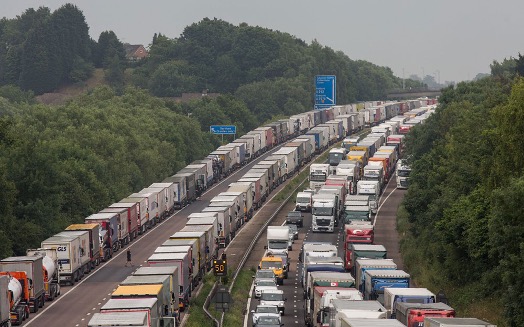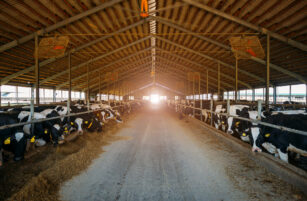Insight Focus
- Logistics bottlenecks have been felt since late 2020 and ports are now struggling.
- COVID restrictions, labour disputes, sanctions on Russia are complicating issues.
- The bottlenecks could last until at least 2023.
Every day, we seem to hear about more issues at ports around the world. While COVID is still causing headaches, it’s not the only culprit for the bottlenecks. Labour disputes, weather events and the Russia-Ukraine war are all complicating issues.
China’s COVID Restrictions Cause Port Pileups
As COVID cases continue to steadily rise in China to their highest level ever, the government is persevering with its zero-COVID policy, locking down swathes of the country to prevent further spread of the virus.
Seven of the top 10 container ship ports in the world are in China. The highest concentration of COVID cases is in the regions with major ports, complicating logistics for shippers and traders.

Bloomberg estimates that as much as 10% of the global shipping fleet is held up at Chinese ports, particularly at the largest two, Shanghai and Ningbo.
Shipping firm, Maersk, announced on the 11th April that several of its vessels would be omitting Shanghai, recommending that customers divert cargoes to avoid the port.
There’s also a shortage of lorry drivers due to the isolation measures, meaning stocks are building up at Chinese ports with an absence of lorry availability to take them further inland. Fragmentation between regions is also causing headaches as many of the entry and exit points to highways between provinces are blocked.
Maersk says the efficiency of its trucking service from and to Shanghai will be “further impacted” due to the lockdown. “Maersk can provide multi-modal services via barge or rail as alternative solutions for the corridor between Shanghai and nearby cities,” it said.
CMIC, the world’s largest container manufacturer, sold over 2.5 million 20-foot equivalent units (TEU) in 2021, a 150% increase on 2020. This suggests that more capacity is coming online to handle greater demand.
But while production of containers and the size of the global fleet has ramped up in 2021, the issues faced at ports and on land means total container volumes have been relatively stagnant throughout the year. Total container volume stood at about 25 million TEU at the end of 2021, up by around 5% on the year, but the actual volumes carried remained at around 15 million TEU.
Import/export volumes have fallen to about 12.5m tonnes since, despite a growing global fleet.

Russia Sanctions Intensify Inspection Requirements
The Port of Rotterdam handles huge number of shipments from Russia every day. The port tranships about 470m tonnes of goods each year, about 13% of which is oriented towards Russia. Around 10% of all containers are linked to Russia in some way.
Now, there are several sanctions the port must negotiate. Firstly, no Russian flagged vessels are allowed to access EU ports. Bloomberg estimates that around 18 Russian vessels have re-flagged to avoid the restrictions.
Dual-use goods are prohibited to be exported to Russia, as are jet fuel, quantum computers and advanced semiconductors, high-end electronics, software, sensitive machinery, and transportation equipment. The EU is also forbidden from accepting wood, cement, seafood, and liquor from Russia. There’s also a quota on fertiliser imports.
Labour Disputes Exacerbate Staff Shortages
Several labour disputes around the world are adding to port issues. Ferry operator, P&O, suspended all services crossing from Dover to Calais in France ahead of the busy Easter break. Services have been suspended since the 17th March, extending for almost one month.
Reports have now emerged of massive tailbacks involving thousands of lorries waiting to cross, some of which have perishable goods on board. P&O carries about 15% of all freight in and out of the UK.

The issue will likely last for a protracted amount of time after the ferry company fired 800 workers to recruit new, lower-paid agency staff. Both the UK government and the National Union of Rail, Maritime and Transport Workers have waded into the row, with the latter threatening legal action.
At the same time, heavy traffic during Easter holidays and an outage in the UK government’s post-Brexit IT border system have added to the delays. Delays have also made journeys longer, meaning drivers need more breaks. The cost of fuel for haulage companies is also compounding the issue.
Another labour dispute is set to take place in the US, with the looming threat of a strike involving 22,000 dockworkers. The workers, who belong to the International Longshore and Warehouse Union, are employed at 29 ports along the West Coast – one of the main entry points for goods shipped from China. The contracts will expire on the 1st July, with strikes expected to take place in May.

Shippers are already redirecting cargoes to the US East Coast to avoid the strike action, but this should only create more bottlenecks and delays. The 29 West Coast ports account for 44% of US container traffic.
The US is also facing a massive trucker shortage equating to a deficit of 80,000 drivers, according to the American Trucking Associations. About 72% of freight in the US is moved by roads. While there are enough drivers in the US with the appropriate licenses to drive trucks, there’s a general reluctance to carry out the work due to long working hours, high risk and loneliness.
Given the uptick in domestic manufacturing, many truck drivers can make a higher salary while working more sociable hours.

Adverse Weather
Major weather events have become more commonplace in recent years, and these are causing disruptions to ports and transportation infrastructure around the world.
This month, a key route linking the port of Durban in South Africa to Johannesburg in the east was closed off due to severe flooding, severing the port’s link to one of the country’s major commercial hubs. Bridges on the country’s primary N2 highway were washed away, and shipping containers were cast adrift in the floodwaters.

A new report commissioned by non-profit, Environmental Defence Fund (EDF), warns that the shipping industry will be faced with more of these extreme weather events as the climate continues to change. The total impacts could cost the shipping industry up to USD 25 billion every year by the end of the century, it says. Annual damages to port infrastructure could reach nearly USD 18 billion, while storm-related port disruptions could add another USD 7.5 billion each year.

Diversions Extend Shipping Delays
Tensions are high in the Black Sea as the conflict shows no sign of abating. At the beginning of the conflict, several commercial shipping vessels were struck by stray projectiles off the Ukrainian coast. This month, the Joint War Committee of the Lloyd’s Market Association listed the Sea of Azov, the Black Sea plus certain Ukrainian inland waters among its Listed Areas.
Many insurers are now unwilling to insure vessels transiting the Black Sea, while others are charging a premium of up to 10% of the ship’s hull value. This premium often exceeds the cost of hiring the vessel.
And certain food shipments that were expected to go to Russia are being re-routed due to difficulty with payment due to the exclusion of Russian firms from the SWIFT international payment system. Coffee traders have reportedly been forced to re-route shipments destined for Russia to the US, disrupting the global flow of trade.
Delayed shipments are also complicating issues in Brazil. Soybean exports normally begin in January but a delay in planting means soybeans are now competing with sugar for freight at Santos port. There’s especially high demand for soybeans due to a global grains shortage caused by the Russia-Ukraine war.

Concluding Thoughts
- The issues being experienced at global ports have been widely attributed to the aftermath of COVID-19.
- The real story is that a perfect storm has gathered due to a host of issues including staffing shortages, bad weather and Russian sanctions.
- Issues are multifaceted, complex, and not likely to clear any time soon.
- The Association of British Ports has warned that supply-chain shortages are here to stay until 2023.
- It could be time for manufacturers to look into shortening supply chains.
Other Insights That May Be of Interest…
Supply Chain Shocks Disturb Breakfast
Fuel Price Hikes Spark Unrest & Food Insecurity
Explainers That May Be of Interest…














